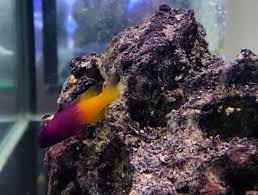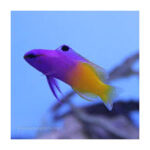Dragons in Ceremonies Honoring Chinese Emperors
1. The Dragon as a Symbol of Imperial Power
In Chinese culture, the dragon (龙, lóng) is the ultimate symbol of imperial power, divine authority, and cosmic harmony. Throughout history, emperors were considered the Sons of Heaven (天子, Tiānzǐ), ruling under the Mandate of Heaven (天命, Tiānmìng). To reinforce this divine connection, dragons played a central role in imperial ceremonies, including coronations, ancestral rituals, and celebrations of imperial achievements.
From the Tang Dynasty (618–907) to the Qing Dynasty (1644–1912), dragon imagery was incorporated into palaces, imperial robes, ceremonial objects, and grand state rituals. The presence of dragons in these ceremonies was not merely decorative but carried deep spiritual, political, and cultural meanings.
2. Dragon Symbols in Coronation Ceremonies
2.1 The Dragon Throne (龙椅, Lóng Yǐ) and Coronation Rituals
During an emperor’s ascension to the throne, elaborate rituals were performed to signify the transfer of the Mandate of Heaven. Central to this ceremony was the Dragon Throne, an elaborately carved seat that symbolized the ruler’s divine authority.
- Design: The throne was often decorated with golden dragons surrounded by clouds, representing the emperor’s connection to celestial forces.
- Ritual Procession: The new emperor would be led to the throne by high-ranking officials, with attendants carrying banners adorned with dragon motifs.
- Sacred Incantations: Priests and scholars recited blessings and historical texts linking the emperor to past dynasties, reinforcing his legitimacy.
2.2 Dragon Robes (龙袍, Lóng Páo) Worn by Emperors
During coronation and state ceremonies, the emperor wore a Dragon Robe, an ornate silk garment embroidered with five-clawed dragons, symbolizing supreme sovereignty.
- The five-clawed dragon was exclusive to the emperor, while nobles and princes were only allowed to wear robes featuring four-clawed dragons.
- The robe’s colors and patterns followed strict regulations, with yellow (the imperial color) dominating the design.
- These robes were worn during sacrificial rites, military victories, and annual imperial gatherings to emphasize the emperor’s celestial power.
3. Dragon Rituals in Imperial Ancestral Worship
3.1 Worship at the Temple of Heaven (天坛, Tiāntán)
The Temple of Heaven in Beijing, built during the Ming Dynasty, was a sacred site where emperors performed rituals to honor their ancestors and the heavens. These ceremonies often included dragon imagery in the form of:
- Dragon-carved altars where the emperor made offerings.
- Dragon motifs on ritual vessels, symbolizing communication between the earthly and heavenly realms.
- Dragon-themed music and dances, performed to invoke divine blessings.
3.2 The Ancestral Sacrificial Ceremony (祭祖大典, Jìzǔ Dàdiǎn)
Before major imperial decisions, the emperor would conduct ancestral rites at the Imperial Ancestral Temple (太庙, Tàimiào). The presence of dragons in this ritual served to:
- Ensure continuity between past and present rulers.
- Reaffirm the emperor’s legitimacy as the rightful Son of Heaven.
- Invoke protection and guidance from ancestral spirits.
During these ceremonies, dragon-shaped incense burners were used to carry prayers to the heavens, and golden dragon banners were displayed prominently.
4. The Role of Dragons in Military Victory Celebrations
4.1 The Dragon Parade for Triumphant Generals
After a victorious battle, emperors organized grand parades where golden dragon banners were carried through the capital to celebrate Heaven’s favor in granting victory.
- Triumphant generals would present themselves before the emperor while standing under a gigantic dragon arch, symbolizing their loyalty to the throne.
- Dragon-drum performances were played along the streets, signifying the emperor’s power in both war and peace.
- Dragon-shaped torches were lit to ward off evil spirits and ensure continued imperial prosperity.
4.2 The Dragon’s Presence in Military Awards
Emperors rewarded loyal commanders and ministers with dragon-engraved seals, swords, and ceremonial armor. The presence of the dragon in these awards signified the emperor’s recognition of divine favor and military success.
5. The Dragon in Imperial Birthday and Longevity Celebrations
5.1 The Emperor’s Birthday Festival (万寿节, Wànshòu Jié)
Each year, the emperor’s birthday was marked by grand ceremonies featuring dragon dances, processions, and fireworks. The significance of the dragon in these celebrations included:
- Ensuring the emperor’s long life, as the dragon is associated with immortality and strength.
- Legitimizing the emperor’s continued rule, reinforcing his connection to celestial forces.
- Bringing blessings to the empire, as the dragon was believed to control rain and agricultural prosperity.
5.2 Dragon Offerings at the Longevity Hill (长寿山, Chángshòu Shān)
At the Summer Palace, emperors often received dragon-shaped gifts made of jade, gold, and silk. These were placed on altars at Longevity Hill, symbolizing the emperor’s divine endurance.
6. Dragons in the New Year Imperial Ceremony
6.1 The Imperial Dragon Dance
During the Lunar New Year, special dragon dances were performed at the Forbidden City, exclusive to the emperor and his court. These dances were meant to:
- Expel evil spirits and ensure a prosperous year.
- Demonstrate the emperor’s strength and stability.
- Strengthen the connection between the emperor and the people, as similar dragon dances were performed in local villages.
6.2 The Dragon Fire Ritual
A sacred dragon fire ceremony was held in the imperial palace, where golden dragon lanterns were lit to symbolize:
- Renewal and rebirth for the empire.
- Protection from misfortune.
- Balance between yin and yang in the cosmos.
7. The Dragon in the Emperor’s Funeral Ceremonies
7.1 The Dragon Motif in Imperial Tombs
When an emperor passed away, his tomb was decorated with dragon carvings and sculptures to ensure his spirit’s ascension to the heavens.
- The Ming Tombs feature dragon-lined pathways, guiding the emperor’s soul to eternity.
- Dragon inscriptions on tombstones recorded the emperor’s achievements and virtues.
- Some emperors were buried in dragon-patterned robes, signifying their continued rule in the afterlife.
7.2 The Dragon’s Role in Memorial Rites
- Dragon-shaped incense burners were used during memorial services.
- The imperial family made dragon-shaped jade offerings, believed to carry the deceased ruler’s spirit to celestial realms.
- The Dragon Bell Ceremony, where large bronze bells engraved with dragons were struck, symbolized the emperor’s final farewell to the mortal world.
Conclusion
The presence of dragons in ceremonies honoring Chinese emperors was more than just artistic decoration—it was a profound statement of divine rule, cosmic order, and imperial legitimacy. Whether in coronations, ancestral rites, military victories, birthday celebrations, or funeral ceremonies, dragons embodied the emperor’s eternal connection to heaven and earth.
As the ultimate imperial emblem, the dragon not only symbolized power and wisdom but also ensured that the emperor’s influence extended beyond his reign, immortalized in the grand traditions of Chinese culture.



